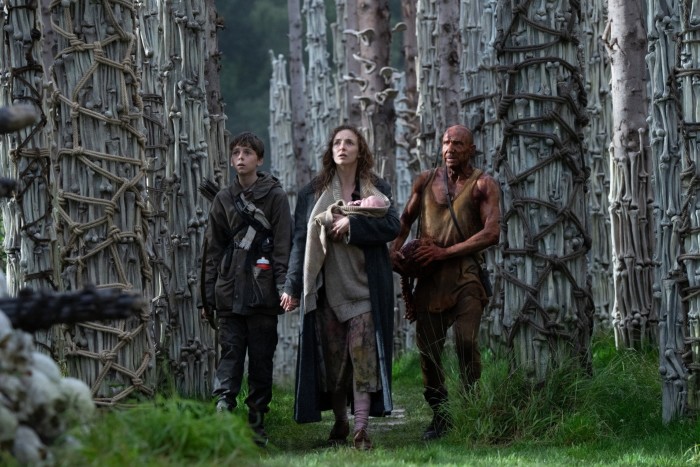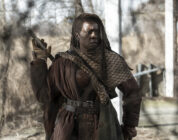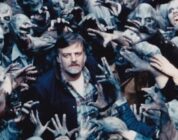Stay informed with free updates
Simply sign up to the Film myFT Digest — delivered directly to your inbox.
The English are in bad shape, but the maths is wrong too. Zombie movie and cultural milestone 28 Days Later was released in 2002, which means the second sequel is actually five years early. The director is again Danny Boyle, the writer once more Alex Garland. Not to hold out for the real 2030 seems a shame. Still, time waits for no one in either the movie business, or the even grimmer hellscape Britain pictured by the filmmakers.
Let’s get the obvious spoiler dealt with. Since the first film — and 2007’s better forgotten 28 Weeks Later — no cure has emerged for the virus that renders people ravening ghouls. But the world has found a remedy for the infected UK. It has simply been cut off, a pariah plague island. (As after Brexit, the status of Northern Ireland is fuzzy.)
The movie can feel like a hall-of-mirrors state-of-the-nation address. The first location is the actual Holy Island, off Northumberland, now a refuge for the uninfected. It has returned to older ways: a tight-knit community of thrift, whittling, singsongs and archery. A little Britain indeed.
Here we meet plucky 12-year-old Spike (Alfie Williams), whose father (Aaron Taylor-Johnson) is brash and mother (Jodie Comer) is ill. Across the causeway, zombies are not all there is to fear. “There are strange people on the mainland,” Taylor-Johnson warns. It was ever thus, and there is much to come. (Not only here. The film is just the first of a potential trilogy, with a follow-up out in January.)
By 10 minutes into the original, Boyle had pulled a masterstroke. That movie is less than the sum of its reputation, but it did have a stunning opening: the desertion of central London, set to the post-rock sound of Godspeed You! Black Emperor. (The sequence felt eerily prophetic during Covid.)
You sense the director straining for the same impact early on here. The score pumps again, courtesy of Young Fathers. But the editing is fidgety, the mood self-conscious. The film feels like a trailer for itself. Thank God the infected are soon on screen to fulfil the basic remit of clammy scares and spattery kills.
The other coup the first time round was the zombies. They didn’t lurch — they sprinted. In 2002, it was a big deal. Now the species has evolved. Some have turned gross and larval. Others flex like bodybuilders.
Another evolution has happened off camera. In 2002, Garland was just a star writer. Now, though, he is a director too, his name grown more saleable than Boyle’s with provocations such as Ex Machina and Civil War. And the longer the film plays, the more Garland it feels. There are military men and blankly loaded images. (A St George flag burns, predictably.) But other sights haunt. A tower of skulls acquires the magic of a strange Christmas tree.

And the film finally grows into itself. The story is grander and more expansive than what came before. Williams and Comer excel. Their part of the plot has real heft, tied up with time, loss and British childhood. It counters the sense you often have with Garland of a lot going on and nothing being said. (Later, Ralph Fiennes adds more eccentric depth and gets a very good joke the film casually throws in like a free gift.)
You might almost think Garland had lost his weakness for the glib and splashy until an outlandish late swerve to prime the next movie. And so, in the end, we are stuck having to continue this review next year. Even then, though, the maths still won’t add up.
★★★☆☆
In cinemas from June 19





